Fridging
Fridging Procedure
1. Preparing the fridge
The first step is to prepare the fridge.
Set the fridge to a temperature between the range of 5 degrees celcius to 8 degrees celcius, but no lower than 5 degrees.
To ensure the fridge space allocated for the axolotl is set within the desired temperature range (ie. Not too cold!), it is advisable to test what the water temperature will be before putting the axolotl in there. This can be done by placing a thermometer in a glass of water and situating this glass where the axolotl will be positioned in the fridge.
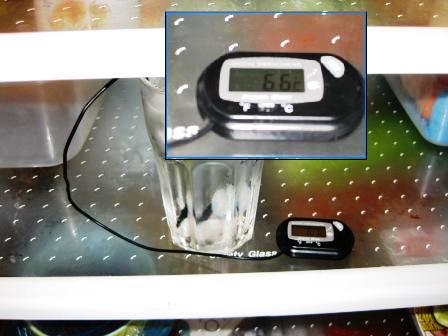
Keep stores of fresh dechlorinated water in the fridge. If you are certain that your water supplier does not use chlorine or chloromine, you do not need to use a dechlorinator. This fridged water will be used for the daily water changes (this keeps the temperature consistent for the axolotl).
2. Preparing the Axolotl for fridging
Select a container that has sufficient space for the axolotl to stretch out to their full length.
Fill the container with fresh water. If your water board utilizes chlorine or chloromine, ensure the water is treated with dechlorinator before adding the axolotl.
When the container is ready, gently transfer the axolotl from the tank to the container.
Ensure that the container also has a secure lid: so the axolotl cannot jump out; fragrences can not permeat the water; and that foodstuffs are not contaminated by the axolotls water.
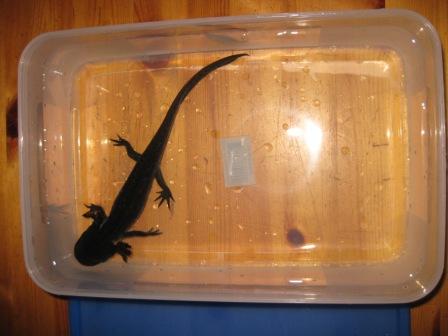
Fill the container as much as practicable, the more volume the better, as this will help dillute wastes with more efficiency while the axolotl is living in this confined space. If the axolotl is being fridged to treat floating issues however, then put enough water to cover the axolotls back, but ensure the axolotl can touch the ground.
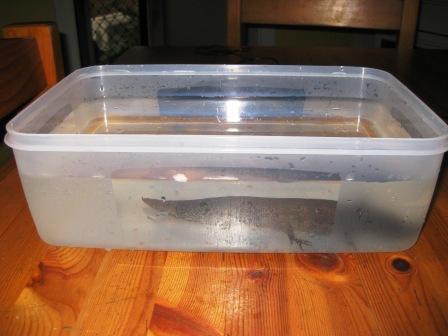
When the axolotl is ready to be moved into the fridge, afix the lid, and cover the container with a teatowel so the axolotl is not disturbed by the fridge light coming on and off.
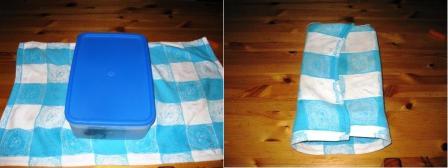
Gently transfer the axolotl to the fridge.
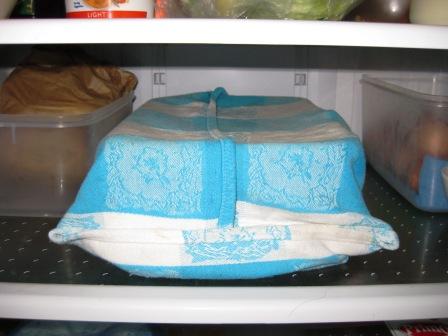
3. Fridging
The water must be changed 100% each day using the fridged dechlorinated water, as this ensures the axolotl is not subjected to temperature shock. It is imperative that the water be changed each day while the axolotl is residing in the colder water, as the cold will cause the axolotl to poop more often, which fouls the water.
While the axolotls body is releasing wastes with more efficiancy (this is why fridging is ideal for helping clear impaction), on the other hand the metabolism is slowed right down. The slowed metabolism will decrease the axolotls appetite and will also slow weight loss.
The axolotl can stay in the fridge for however long it takes for their health to improve, and the axolotl could stay in the fridge indefinately if necessary.